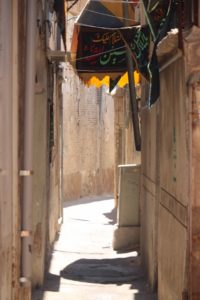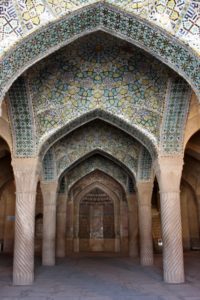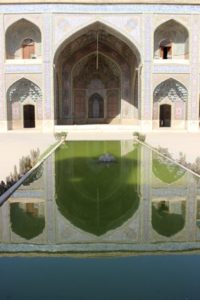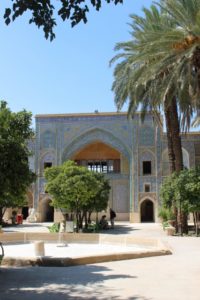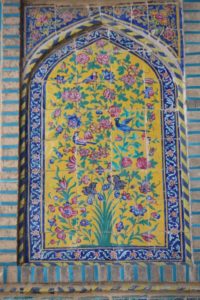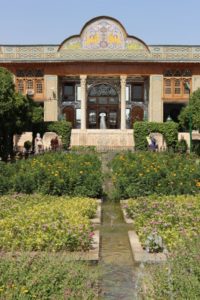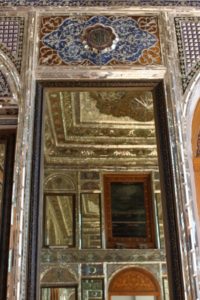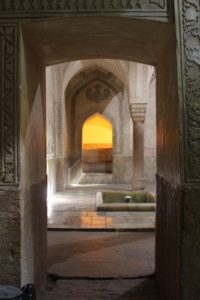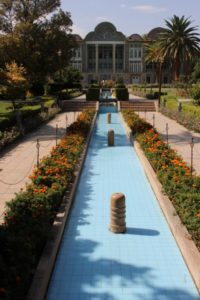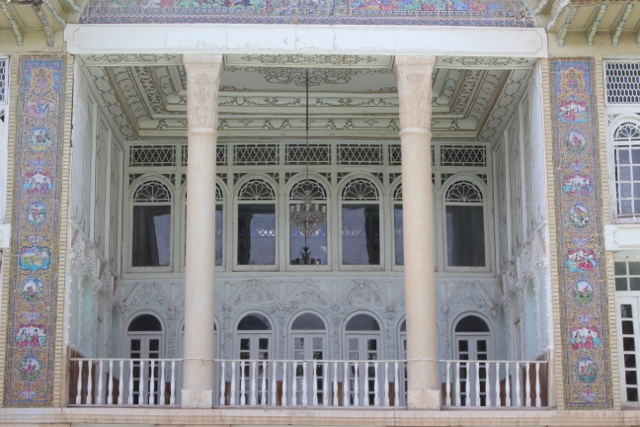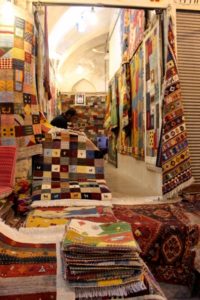Shiraz is very much the product of 18th Century Karim Khan Zand, who is resposible for most of the present-day sight; nice, but somehow, I didn’t connect to the town, as in other places in Iran
Many Iranians love Shiraz, the city associated with education, refinement, poetry. Shirazis are considered the most distinguished, most cultured, in a country full of cultured and distinguished people. This is where Iran’s most reverred poets are buried. And this is where the famous Shiraz grapes were turrned into wine – admittedly, less of an issue with the admiration of Iranians nowadays, but certainly a grateful topic in much of the ancient poetry.
(On Shiraz wine: already in the 9th Century Shiraz had a great reputation for wine. Marco Polo also commented on the wine here, but the more recent Shiraz wine actually originates from Georgia, thanks to Shah Abbas II, who in the 18th Century resettled a group of Georgians to Shiraz, who brought their own grapes. Wine production abruptly stopped in 1979, after the Revolution, although rumours abound that there is still lots of illegal production in the villages. Incidentally, the grape variety Shiraz, as used in Australia and other Southern Hemisphere countries, has nothing to do with the town of Shiraz, but is derived from the Syrah grapes from the Rhone Valley in France.)
Anyhow, back to Shiraz the city. Historically, Shiraz was an important city in the 9th and 10th Century, and managed to escape the ravages from the Mongols and from Tamarlane, yet, nothing from this era seems to have survived. Shiraz today is very much the product of one Karim Kahn Zand. After the Safavid Dynasty was routed by an Afghan invasion in 1722, which ended the Thrid Persian Empire, first Nadar Shah, associated with the Safavids, picked up the pieces, but upon his assessination Karim Kahn grabbed power in 1749. It was he who established Shiraz as the Persian capital. And it was he who embarked on a construction wave which is what the tourists come to see today.
There are several impressive mosques, the Masjed-e Vakil and the Mashed-e Nasir-al-Molk, the peaceful courtyards of the Khan Madrasse (not of Karim Kahm, though), there are a couple of elegant mansions, the Narenjestan and the Kahn-e Zinat-ol-Molk – admittedly dating from later, from the Qajar era -, and there is the dominating Arg-e Karim Kahn, the castle in the centre of town (as with Esfahan, click on the link for some extra photos). There is even a botanical garden, Bagh-e Eram, a pleasant place to wander around for an hour or so, and find a bench in the shade, on an afternoon. The bazaar, too, and many other buildings, all are from the period from 1749 to 1779, which was the year that Karim Kahn died, and his dynasty of one came to an end. (And was taken over by the Qajars, who then moved the capital to Tehran.)
In all honesty, Isfehan is much nicer, with its shaded avenues and superior monuments. But Shiraz has its own attractions. Although smaller than Isfahan, the centre of town has a cosmopolitan feel, with modern shops, somehow more stylish than we have seen so far; several shopping centres, too, not that big, but again, they look modern. Everywhere in central Shiraz there are coffee shops (the type that serve coffee), another novelty. Yet, although friendly enough, I never had the feeling that we connected here, unlike in so many other Iranian towns.
But the one thing that sets Shiraz aside, are its tombs. Or move directly to Iran’s preeminent tourist site, Persepolis.
